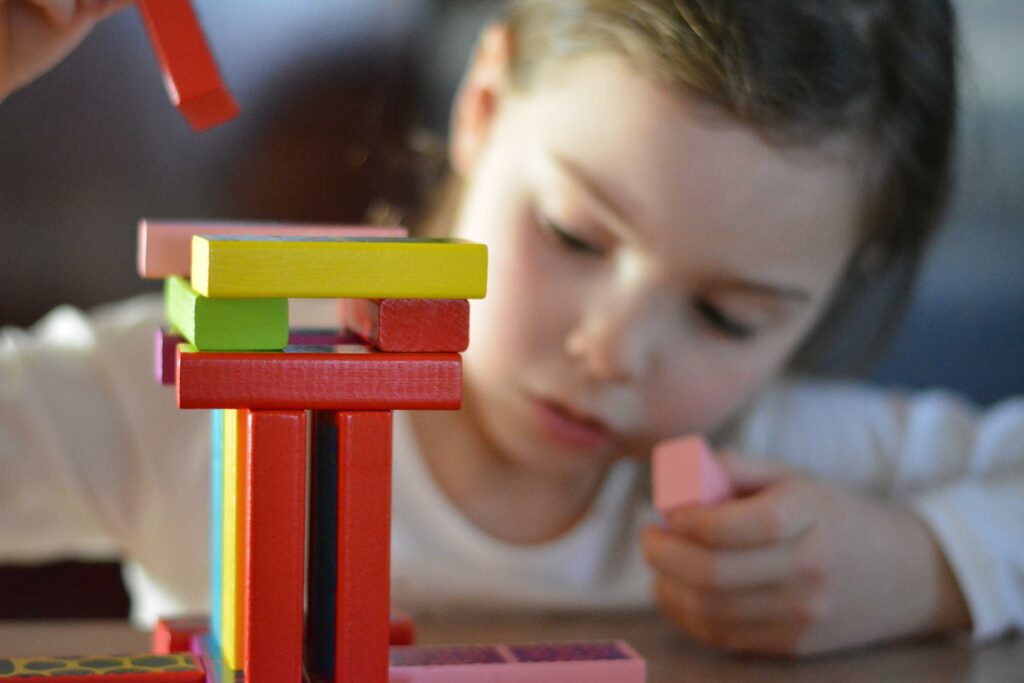The Leuven Scale is a five point scale that allows childcare practitioners to measure two vital components of learning, development and progress in children – their ’Emotional Well-being’ and ‘Involvement’. Developed at Leuven University in Belgium by Ferre Leavers and his team, this form of assessment has been created to help practitioners with these judgements.
Children tend to learn better when they feel happy and are emotionally confident. Children are like “fish in water” when in a higher state of ‘well-being’ and are comfortable in their environment, confident and eager to experiment and explore. While children with low levels of well-being often appear frightened, anxious and dependent, making it hard for them to learn in a sustained way and explore their potential, according to Leavers.
Curiosity, fascination, deep satisfaction and a genuine interest in what they are doing are characteristics of high levels of ‘involvement’ that indicate a ‘deeper level’ of meaning learning. These signs of a child’s ‘involvement’ are also directly linked to the EYFS (Early Years Foundation Stage) characteristics of effective teaching and learning.

The Leuven Scale for Levels of Well-being
- Extremely low – children with extremely low levels of well-being will be in obvious distress or upset. Perhaps they are crying or exhibiting tantrums or maybe angry or tired.
- Low – a child may be unhappy or uncomfortable in their surroundings which may make them reluctant to engage.
- Moderate – children with moderate levels of well-being may not appear to be either happy or sad and are performing a task but may not be exhibiting any sign of doing so with any enthusiasm or engagement past a performing or superficial level.
- High – the child is visibly happy in what they are doing. They may be laughing or smiling or simply absorbed in what they are doing in a contented way.
- Extremely high – children with extremely high well-being in the setting are very comfortable in their surroundings and exhibiting signs of engagement and enthusiasm for the task at hand, whatever it may be. They may chat away about what they are doing, to another child or adult or even to themselves, as they go about their activity.

The Leuven Scale for Levels of Involvement
- Extremely low – activity is simple, repetitive and passive. The child seems absent and displays no energy. They may stare into space or look around to see what others are doing.
- Low – frequently interrupted activity. The child will be engaged in the activity for some of the time they are observed, but there will be moments of non-activity when they will stare into space, or be distracted by what is going on around them.
- Moderate – mainly continuous activity. The child is busy with the activity but at a fairly routine level and there are few signs of real involvement. They make some progress with what they are doing but don’t show much energy and concentration and can be easily distracted.
- High – continuous activity with intense moments. The child’s activity has intense moments and at all times they seem involved. They are not easily distracted.
- Extremely high – the child shows continuous and intense activity revealing the greatest involvement. They are concentrated, creative, energetic and persistent throughout nearly all the observed period.
Using the Leuven Scale in your observations on eylog:

eylog allows you to create next steps and planning documents, providing practitioners with the resources to translate these assessments into an effective, practical action plan.
There are ten action points developed by the Centre of Experiential Education, which is headed by Ferres Leavers for improving children’s well-being and involvement.
These ten techniques can act as a highly useful screening tool to enhance the learning opportunities for children independently and with their peers. Applying these techniques at your setting ensures you are providing the right ‘physical’ and ’emotional’ environment for learning, and are easily accessible for practitioners.
| 1. Bring in new and non-traditional materials and activities that pique their curiosity 2. Rearrange the activity areas in the classroom to more appealing corners or areas 3. Encourage them and provide stimulating inputs 4. Encourage them to display initiative 5. Identify children with emotional challenges and chart out a plan sustaining interventions 6. Identify children with developmental needs and create interventions that encourage high levels of involvement 7. Bring in activities that allow them to explore the world of feelings, emotions and values 8. Support them to develop positive relations amongst children and with the teachers 9. Identify the children’s interests and provide activities that engage their interest 10. Make an assessment of the content/toys/books in the activity centres and make them more challenging |

